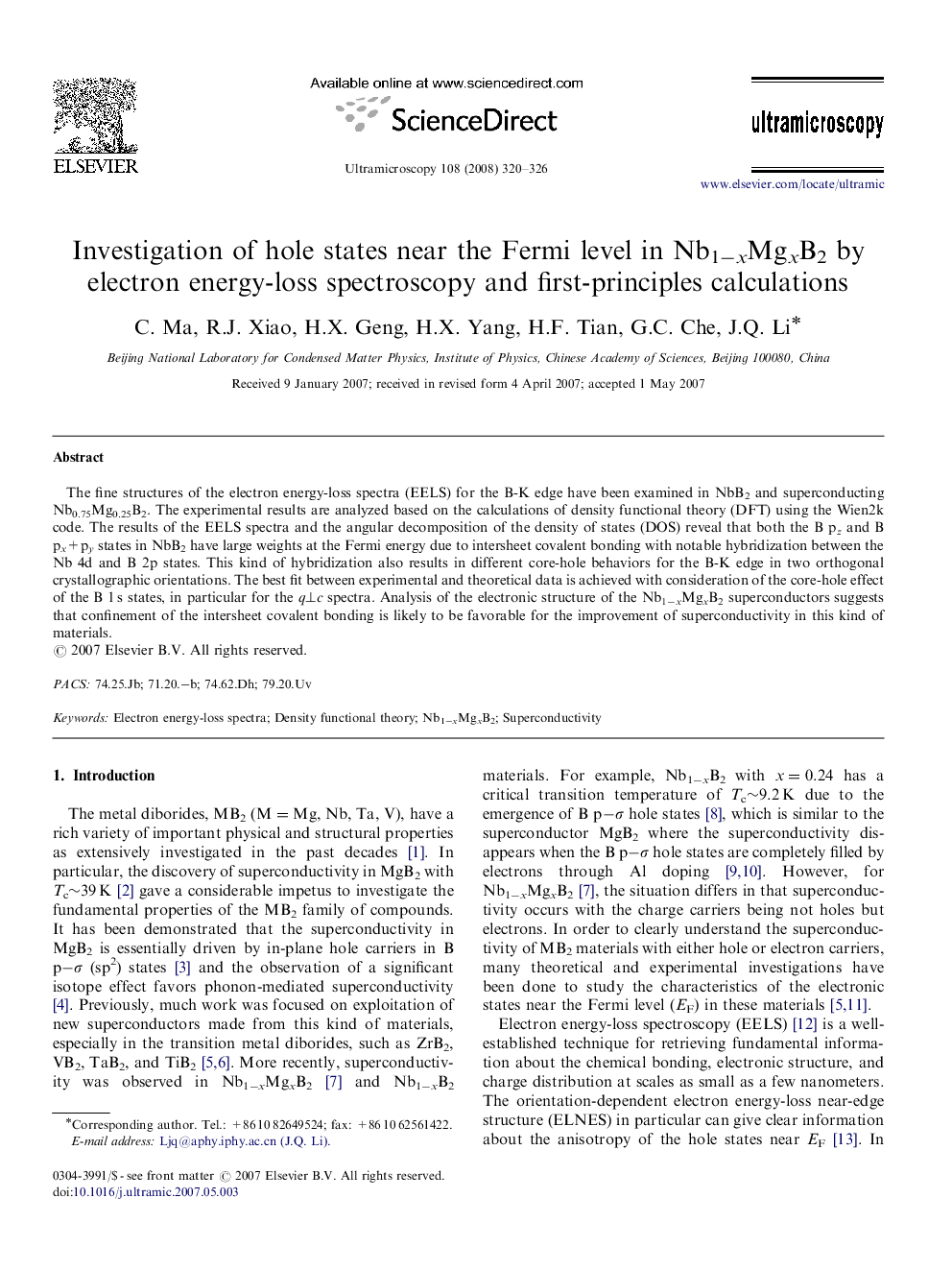| Article ID | Journal | Published Year | Pages | File Type |
|---|---|---|---|---|
| 1678108 | Ultramicroscopy | 2008 | 7 Pages |
Abstract
The fine structures of the electron energy-loss spectra (EELS) for the B-K edge have been examined in NbB2 and superconducting Nb0.75Mg0.25B2. The experimental results are analyzed based on the calculations of density functional theory (DFT) using the Wien2k code. The results of the EELS spectra and the angular decomposition of the density of states (DOS) reveal that both the B pz and B px+py states in NbB2 have large weights at the Fermi energy due to intersheet covalent bonding with notable hybridization between the Nb 4d and B 2p states. This kind of hybridization also results in different core-hole behaviors for the B-K edge in two orthogonal crystallographic orientations. The best fit between experimental and theoretical data is achieved with consideration of the core-hole effect of the B 1 s states, in particular for the qâ¥c spectra. Analysis of the electronic structure of the Nb1âxMgxB2 superconductors suggests that confinement of the intersheet covalent bonding is likely to be favorable for the improvement of superconductivity in this kind of materials.
Keywords
Related Topics
Physical Sciences and Engineering
Materials Science
Nanotechnology
Authors
C. Ma, R.J. Xiao, H.X. Geng, H.X. Yang, H.F. Tian, G.C. Che, J.Q. Li,
